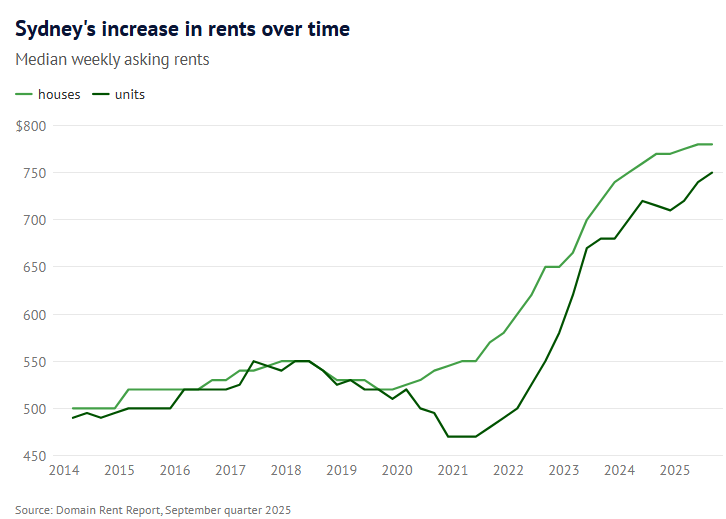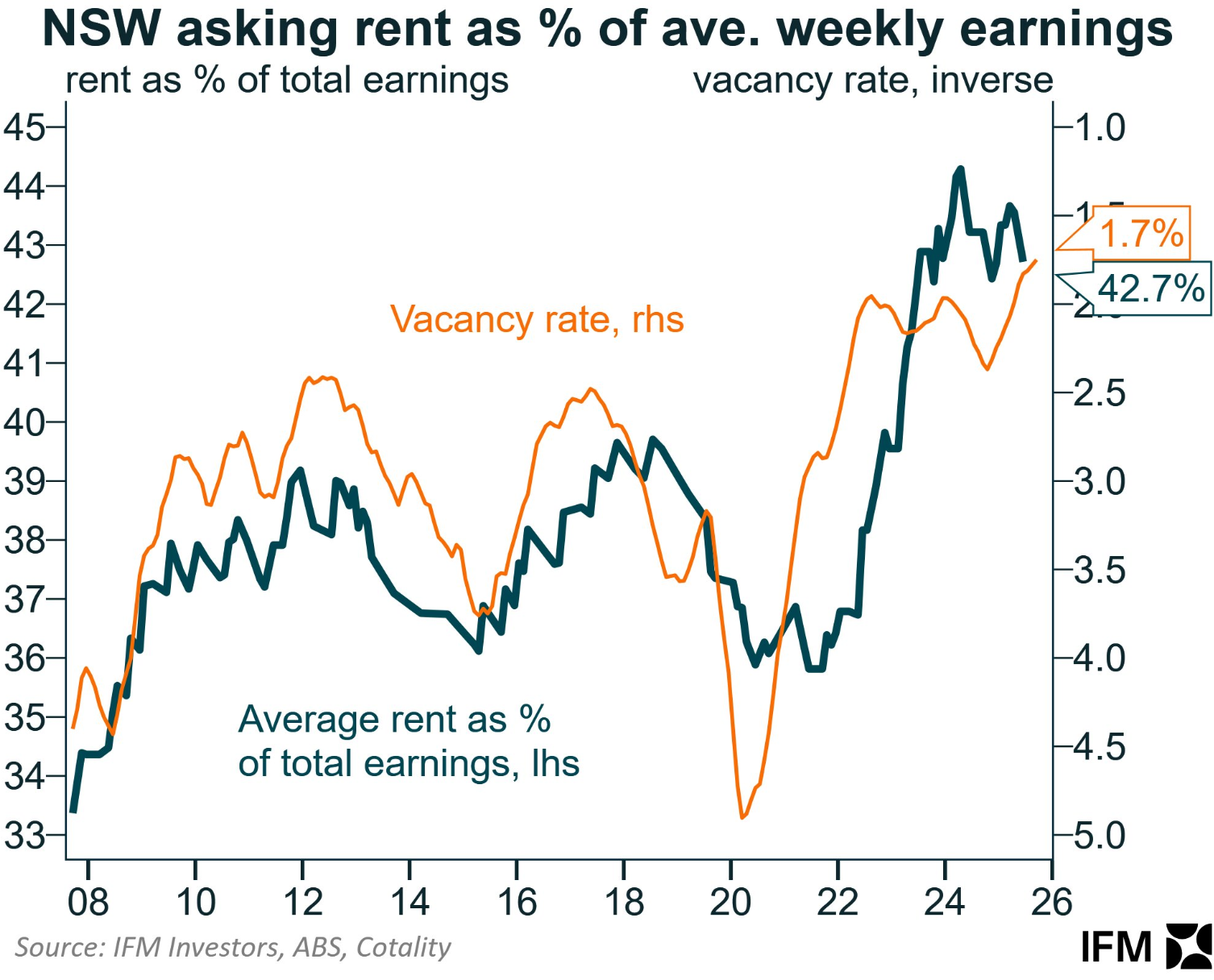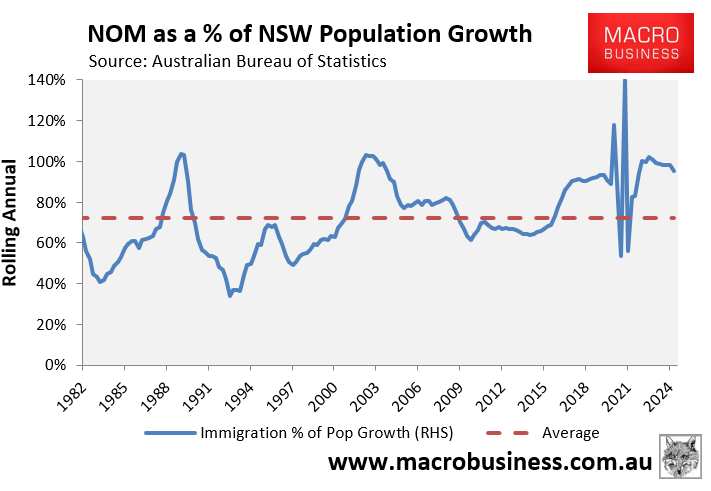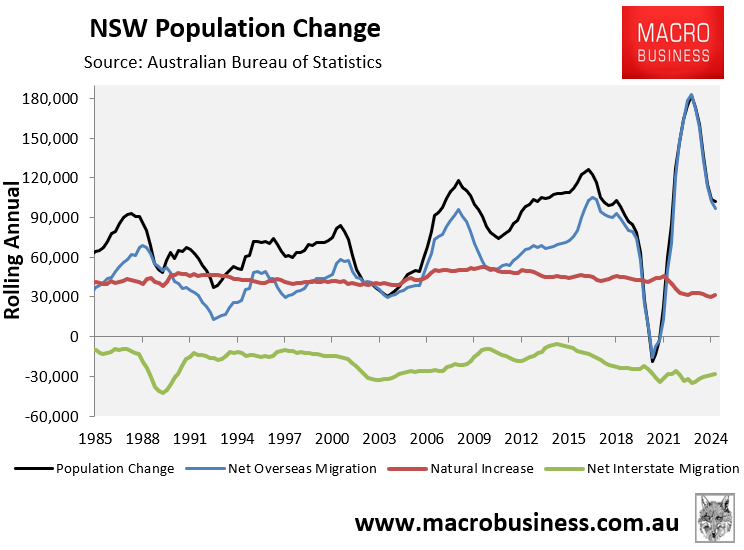Domain reported that the cost of renting a median Sydney home hit a record high in September.
As illustrated below, the median weekly Sydney house rent was $780 in the September quarter of 2025, up $240 (44%) from $540 in the September quarter of 2020.
The median Sydney unit rent was $750 in the September quarter of 2025, up $255 (52%) from $495 in the September quarter of 2020.

Domain chief of research and economics, Dr Nicola Powell, said that tenants had hit their “affordability ceiling” amid “relentless rental hikes over the previous few years”.
Domain also reported that Sydney’s rental vacancy rate was only 0.9% in the September quarter, well below the vacancy rate of about 3% that reflects a balance between tenants and landlords.
“Vacancy rates are still quite tight … it’s still very much a landlord’s market”, she said.
Sarah Elkordi, director of tenants’ firm The Rent Fairy, said she had clients who were moving further away from the CBD, house-sharing, or switching from renting homes to apartments to save money.
“So people are becoming, I think, smarter in terms of saving costs in living when they can go into a unit and not pay water, pay less electricity, pay less gas, pay less rent”, she said.
Peter Tulip, chief economist at the Centre for Independent Studies, also argued that rental affordability in Sydney was deteriorating, which was having a “terrible effect” on society and increasing the divide between the “housing haves and the housing have-nots”.
“If you’re a renter or a young home buyer, your life is getting increasingly difficult, and a lot of people in that group are thinking about moving out of Sydney because they just can’t afford the housing that their parents and grandparents had”, he said.
Meanwhile, Alex Joiner from IFM Investors posted the following chart on Twitter (X) showing the historic decline in New South Wales’ rental affordability amid the tightening vacancy rate:

One must recognise that the primary driver of Sydney’s population growth and therefore household formation is net overseas migration.

In the year to the March quarter of 2025, 96,800 net overseas migrants landed in New South Wales, accounting for 95% of the state’s population increase.

Any rental shortage in New South Wales, therefore, is directly attributable to the state’s excessive immigration intake.
The solution to the rental crisis is abundantly clear: cut immigration to a level below the capacity to supply housing and infrastructure.
Otherwise, the housing situation will continue to deteriorate.

